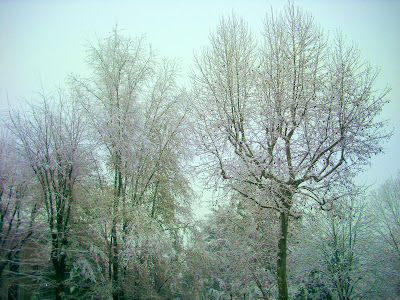
























This morning, Monday, Dec. 6, after a snowfall at night, around 10, I went out to photograph a few bare trees and snow in my area.
The light conditions were not particularly good, and the rain light, which had succeeded the snow at night, had already reduced the snow cover the trees and the foggy sky gray uniform colors to all objects, including trees. While the objective difficulties
photo, I managed to capture some images of leafless trees and snowy winter which morphology may have some botanical interest, to identify them even during the period of dormancy, in the shape of the trunk, the provision branches, the color of the bark with the other structural features.
Recognition of tree species in winter is no easy task, because most of the plants, except conifers or other evergreens, are wholly or partially devoid of leaves, very important, often crucial for the identification and classification of the genus tree. Stumble
order trees and shrubs that I photographed, which I kept in order photo blog:
- Alder (in a row)
- the maple
- the camellia
- beech
- persimmons, with the fruit still hanging
-
deodar cedar - the sycamore and elm
- the Albizia
- maple negundo
- bamboo
- Arizona cypress
- walnut
- the Scots pine
- wisteria
- the fig
- the quince
- spruce (Picea abies)
- some
alder - the locust
- the spin of Judas
- maple sugar
- the palm of St. Peter
- the Aleppo pine
- Birch (right in photo)
- American Red Oak
- the Storace, better known by the botanical name "product" of "liquidambar.
I have not photographed many other interesting plants, also in the area, the difficulty of "differentiation photographically" from the context of multi-tree form in which it grows in mixed and intertwined.
0 comments:
Post a Comment